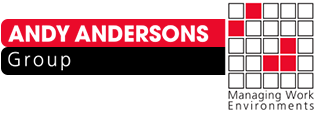-
admin@andyandersons.net.au
Send mail
-
Call Anytime (03) 9988 1228
-
Unit 2/44-48 Lock Ave,
Werribee VIC 3030, Australia -
- Welcome to our Andy Andersons Group!

In the dynamic environment of an office building, high-traffic areas pose unique cleaning challenges that require a strategic approach to maintain cleanliness and hygiene. At Andy Andersons Group, we understand that these bustling spaces need special attention to ensure a clean, safe, and welcoming atmosphere for employees and visitors alike. Here, we share our insights and expertise on effectively tackling the complexities of cleaning high-traffic areas in office buildings.
Understanding High-Traffic Areas
High-traffic areas in office buildings typically include lobbies, corridors, elevators, restrooms, and break rooms. These spaces experience constant foot traffic, making them prone to dirt accumulation, wear and tear, and the rapid spread of germs. Cleaning these areas involves more than just routine sweeping and mopping; it demands a comprehensive and proactive cleaning strategy.
Establishing a Routine Cleaning Schedule
One of the most effective ways to manage high-traffic areas is by implementing a rigorous cleaning schedule. Frequent cleaning intervals are essential to prevent dirt and grime from building up. At Andy Andersons Group, we recommend:
– Daily Cleaning: Vacuuming and mopping floors, wiping down high-touch surfaces like door handles, elevator buttons, and light switches.
– Bi-weekly Deep Cleaning: Steam cleaning carpets, scrubbing floors, and sanitizing restrooms and break rooms.
– Monthly Maintenance: Polishing floors, deep-cleaning upholstery, and performing a thorough inspection to address any maintenance issues.
Utilizing High-Quality Cleaning Products and Equipment
High-traffic areas require durable and effective cleaning solutions. Investing in high-quality cleaning products and equipment not only enhances the efficiency of the cleaning process but also ensures long-lasting cleanliness. For instance, using industrial-grade vacuum cleaners, steam cleaners, and eco-friendly disinfectants can significantly improve the overall hygiene of these spaces.
Implementing Preventative Measures
Preventative measures can greatly reduce the frequency and intensity of cleaning required in high-traffic areas. Some practical strategies include:
– Entrance Mats: Placing heavy-duty mats at entrances to trap dirt and moisture from shoes, minimizing the spread of debris throughout the building.
– High-Visibility Signage: Encouraging employees and visitors to practice good hygiene, such as washing hands regularly and using trash bins for waste disposal.
– Regular Maintenance: Keeping fixtures, such as faucets and hand dryers, in good working condition to prevent malfunctions that can lead to messes.
Training and Empowering Cleaning Staff
A well-trained cleaning staff is crucial for maintaining high-traffic areas. At Andy Andersons Group, we ensure our team is equipped with the knowledge and skills to handle the unique challenges of these spaces. This includes training on the proper use of cleaning equipment, understanding the best practices for different surfaces, and emphasizing the importance of attention to detail.
Adapting to Changing Needs
Office buildings are dynamic environments, and the needs of high-traffic areas can change over time. Regularly assessing the effectiveness of cleaning strategies and being flexible enough to adapt to new challenges is key. Whether it’s adjusting cleaning schedules during flu season or implementing new technologies, staying responsive to the evolving needs of the building ensures continued cleanliness and satisfaction.
In conclusion, cleaning high-traffic areas in office buildings requires a combination of consistent routine, high-quality products, preventative measures, and skilled staff. At Andy Andersons Group, we are committed to overcoming these challenges and providing top-tier cleaning services that keep your office building pristine and inviting.
Picture credit: Dillan Gyllis on unsplash
